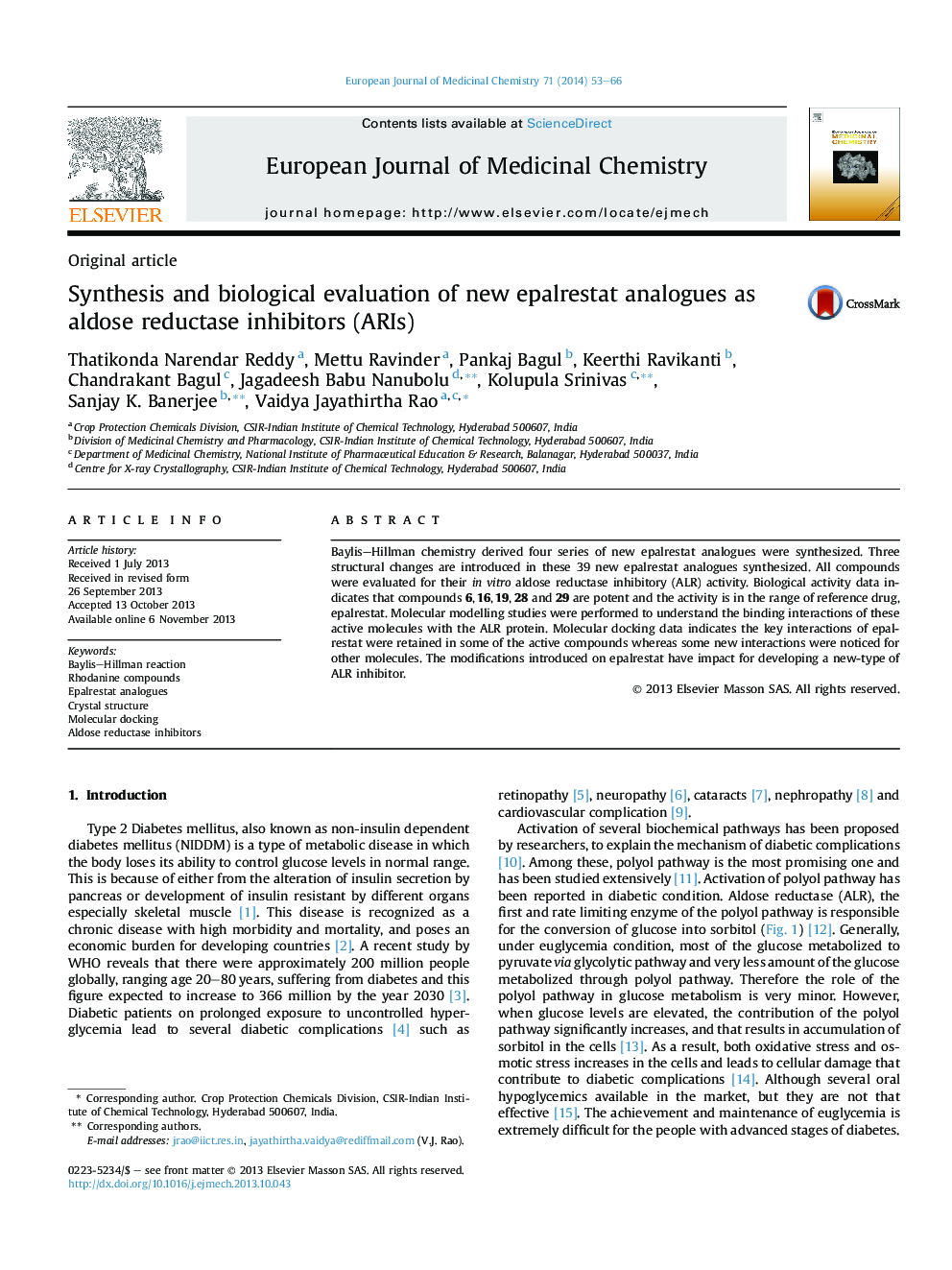| Article ID | Journal | Published Year | Pages | File Type |
|---|---|---|---|---|
| 1392581 | European Journal of Medicinal Chemistry | 2014 | 14 Pages |
•Series of new epalrestat analogues involving three structural changes are synthesized.•Stereochemistry of the two double bonds is confirmed by X-ray crystallographic data.•Docking studies were performed to gain insight about protien–ligand interactions.•Five compounds exhibited excellent inhibition compared to standard drug, epalrestat.•The work has excellent scope to probe further structure activity relationships.
Baylis–Hillman chemistry derived four series of new epalrestat analogues were synthesized. Three structural changes are introduced in these 39 new epalrestat analogues synthesized. All compounds were evaluated for their in vitro aldose reductase inhibitory (ALR) activity. Biological activity data indicates that compounds 6, 16, 19, 28 and 29 are potent and the activity is in the range of reference drug, epalrestat. Molecular modelling studies were performed to understand the binding interactions of these active molecules with the ALR protein. Molecular docking data indicates the key interactions of epalrestat were retained in some of the active compounds whereas some new interactions were noticed for other molecules. The modifications introduced on epalrestat have impact for developing a new-type of ALR inhibitor.
Graphical abstractModifications/substitutions prevail: Four series of epalrestat analogues synthesized involving three structural modifications. In vitro aldose reductase activity and docking data generated for the epalrestat analogues informs that five compounds are potent.Figure optionsDownload full-size imageDownload as PowerPoint slide
